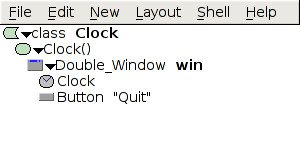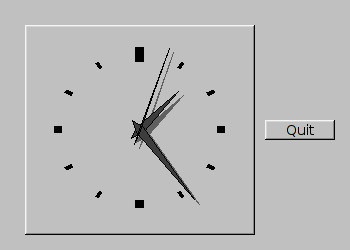mouse, windowing system, hyperlinks, chording keyboard, collaborative work (email, IM, video conf)
Atari GEM, Amiga, NeXTstep, OS/2, Unix X11, Xerox Star/Smalltalk
An event is an action, usually triggered by the user: e.g., clicking on a button, selecting a menu item, pressing Enter, moving the mouse. A callback is a procedure/function invoked when a corresponding event happens. For example, the exit() function might be run when the user clicks on a "Quit" button.
 |
 |
CubeMain was very small, just had the main() function and kicked off an instance of CubeViewUI. CubeViewUI was generated by fluid, and just contained the user interface widgets. The primary functionality was in CubeView.cxx, in a class that was used/instantiated by CubeViewUI.
Weather modelling, computational fluid dynamics, metallurgy, modelling a nuclear blast without actually setting one off, aircraft design, protein folding, off-line 3D rendering, large-scale satellite image analysis, large websites, data mining, etc.
A computer processes input data according to input instructions, and produces output results. The computer's memory can store both the input data as well as the instructions.
- Threads: master thread forks worker threads; collects results when threads
complete. OpenMP, POSIX Threads.
- Message passing: threads communicate by sending messages to each other.
MPI.
- Data parallelism: each thread performs same work in parallel on a different chunk of the data. HPF.
OpenMP uses the threading model instead of the message-passing model, is easier to program in and easier to add-on to existing serial code. The programmer need not know how many processors the program is actually using. It is generally more well-suited to a shared-memory model. MPI is more complex to program in but provides more control over synchronization and communication. MPI often scales up better to more processors; it is more appropriate for distributed-memory models.
float dotproduct(int len, float vec1[], float vec2[]) {